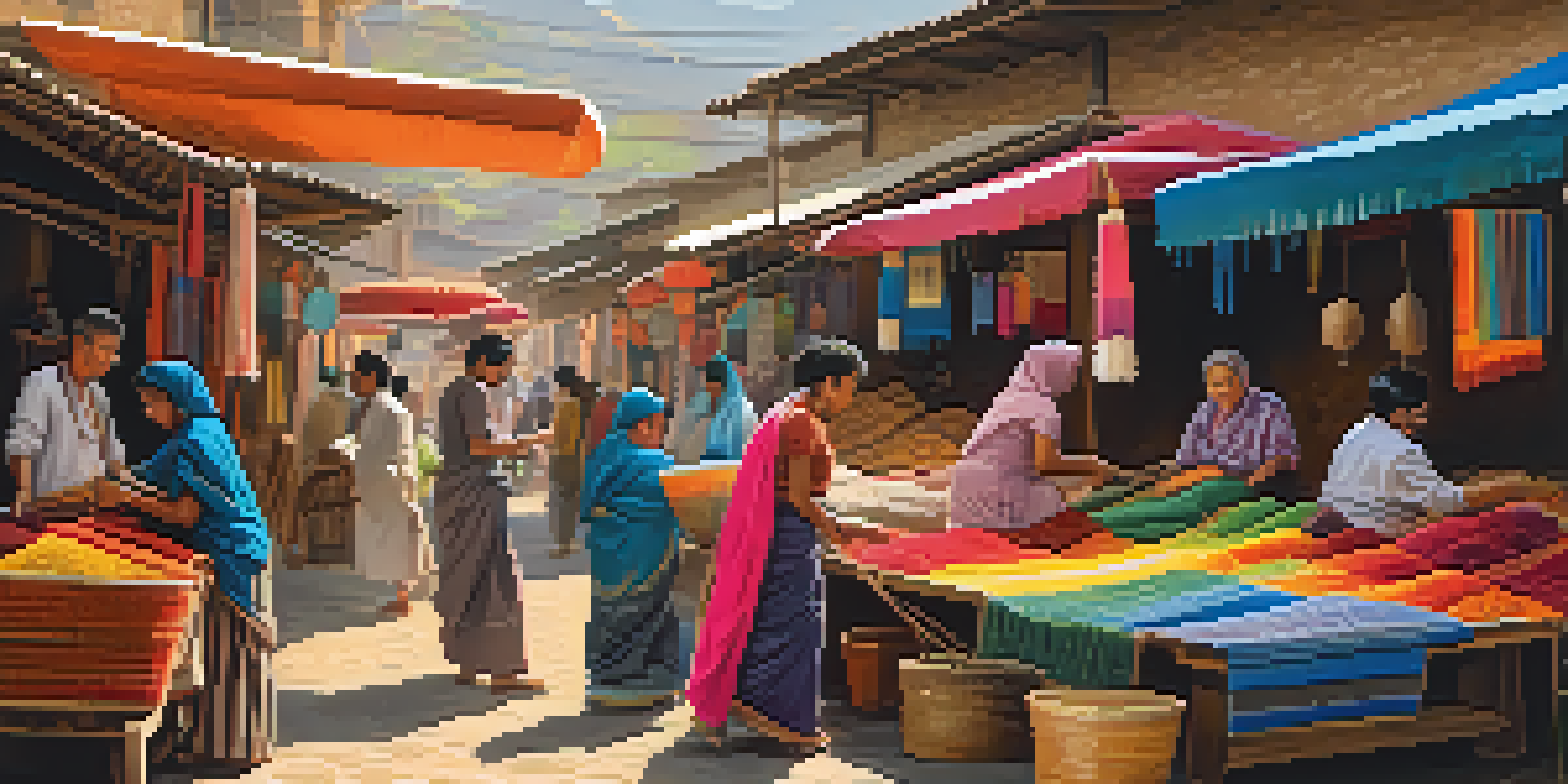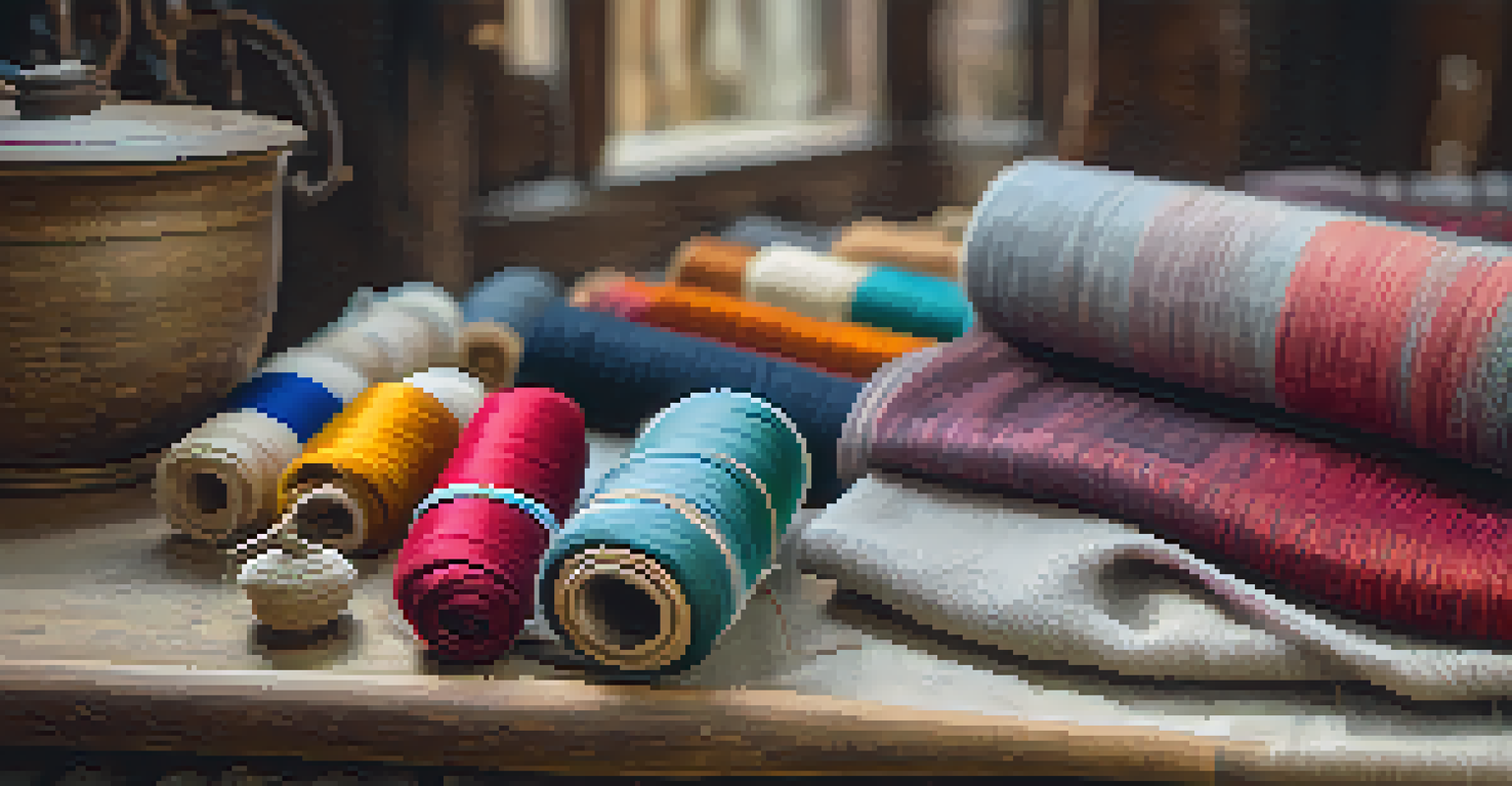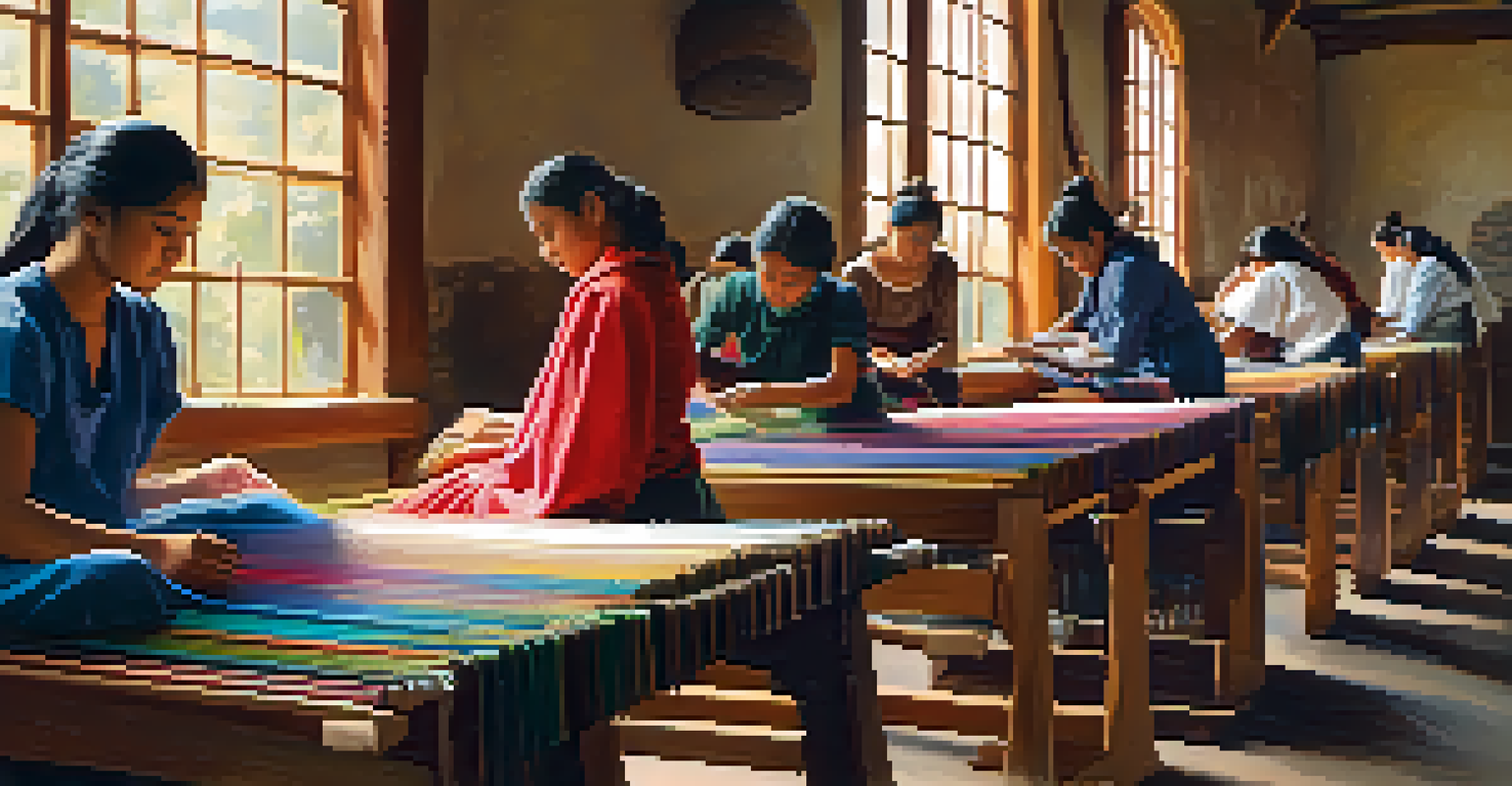Challenges in Preserving Traditional Textiles and Fashion

Globalization's Impact on Traditional Textiles
Globalization has significantly altered the landscape of textile production. As international markets expand, traditional textiles often struggle to compete with mass-produced alternatives. This competition can lead to a decline in the demand for handcrafted items, jeopardizing the livelihoods of artisans.
Globalization is a double-edged sword; it opens markets but threatens traditions.
Moreover, the infiltration of global fashion trends can overshadow local practices, pushing traditional textiles to the sidelines. Consumers, drawn to the allure of fast fashion, may overlook the cultural significance and artistry embedded in traditional pieces. This shift not only impacts artisans but also threatens the unique heritage associated with these textiles.
In essence, while globalization fosters a vibrant exchange of ideas, it poses a substantial challenge for traditional textile preservation. Communities must find ways to balance global influences with their unique cultural identities to ensure these textiles endure.
Environmental Concerns in Textile Production
The environmental impact of textile production is an increasing concern, especially for traditional methods. Many conventional practices utilize natural fibers and dyes, which are more sustainable compared to synthetic counterparts. However, the pressure to modernize can tempt artisans to adopt less eco-friendly processes in order to meet market demands.

Additionally, climate change poses a direct threat to the raw materials needed for traditional textiles. For instance, changing weather patterns can affect cotton yields or the availability of specific plants used for dyes. This unpredictability can disrupt age-old practices, making it challenging for artisans to continue their craft.
Globalization Threatens Traditional Textiles
Globalization challenges the demand for handcrafted textiles, putting artisans' livelihoods and cultural heritage at risk.
As the industry shifts toward sustainability, it becomes crucial for traditional textile producers to adapt without losing their cultural heritage. Striking a balance between innovation and preservation is key to ensuring that these traditional practices can thrive in an environmentally conscious world.
Declining Skills and Knowledge Transfer
One of the most significant challenges in preserving traditional textiles is the decline in skilled artisans. As younger generations gravitate towards urban living and modern careers, there’s a risk that ancient techniques may be lost. Without proper mentorship and training, the intricate skills required to produce traditional textiles may fade away.
Preserving culture is not a luxury; it is a necessity for future generations.
Furthermore, the art of storytelling that often accompanies these textiles is also at risk. Each piece typically carries a narrative, passed down through generations, which enriches its cultural value. If artisans are not able to communicate these stories, the textiles lose a vital aspect of their identity.
To combat this, initiatives that promote skill-sharing and workshops can be instrumental. Encouraging young people to engage in traditional practices not only helps in skill retention but also fosters a deeper appreciation for cultural heritage.
Market Access and Economic Viability
Many traditional textile artisans struggle with market access, limiting their economic viability. While e-commerce has opened new avenues, many artisans lack the resources or knowledge to navigate these platforms effectively. Consequently, their beautifully crafted items often go unnoticed in a sea of mass-produced goods.
Additionally, the pricing of traditional textiles poses a challenge. Artisans pour hours of labor into each piece, but the perceived value can be low compared to cheaper, machine-made alternatives. This discrepancy can discourage artisans from continuing their work, as financial sustainability is critical for the preservation of their craft.
Environmental Impact of Textile Production
Traditional textile methods, while more sustainable, are at risk as artisans face pressure to adopt less eco-friendly practices.
Building partnerships with ethical brands and organizations can create a better market for these artisans. By promoting the unique value of traditional textiles, it’s possible to cultivate a consumer base that appreciates and supports these cultural treasures.
Cultural Appropriation and Authenticity
Cultural appropriation is a growing concern in the realm of traditional textiles. When elements of a culture are borrowed without understanding or respecting their significance, it can lead to a dilution of the original meaning. This is particularly problematic when commercially successful brands use traditional designs without acknowledging their cultural roots.
This issue not only threatens the authenticity of traditional textiles but also impacts the communities that rely on these crafts. When the market is flooded with inauthentic reproductions, it can undermine the hard work of artisans who strive to preserve their heritage. It also raises questions about ownership and who gets to profit from cultural expressions.
Promoting awareness and respect for the origins of traditional textiles is essential. Education about the cultural context behind these pieces can help consumers make informed choices, fostering a more respectful appreciation for the artistry involved.
Technological Advancements and Adaptation
While technology can pose challenges, it also offers solutions for preserving traditional textiles. Digital platforms can enhance visibility for artisans, allowing them to reach a global audience. Furthermore, technology can aid in documenting traditional practices, creating a digital archive that ensures these methods are not lost to time.
However, embracing technology requires a delicate balance. Artisans must navigate how to incorporate new tools without compromising the integrity of their craft. For example, while using modern machines can increase efficiency, it might take away from the handmade essence that makes traditional textiles special.
Decline of Artisan Skills and Knowledge
The loss of skilled artisans and the art of storytelling threatens the preservation of traditional textiles and their cultural significance.
Ultimately, the key lies in collaboration between traditional artisans and tech innovators. By working together, they can find ways to enhance production while maintaining the authenticity and cultural significance of traditional textiles.
Role of Education and Community Engagement
Education plays a pivotal role in the preservation of traditional textiles. Programs that teach both the skills of textile production and the cultural significance behind them can help instill pride in younger generations. By understanding the value of these traditions, communities can cultivate a sense of responsibility to keep them alive.
Moreover, community engagement initiatives can foster a collaborative spirit among artisans, encouraging them to share techniques and ideas. This camaraderie not only strengthens local networks but also enriches the craft, as artisans learn from one another's experiences and innovations.

Involving the community in preservation efforts creates a supportive environment where traditional textiles can thrive. When people come together to celebrate and promote their heritage, it fosters a collective identity that is invaluable in maintaining these cultural treasures.